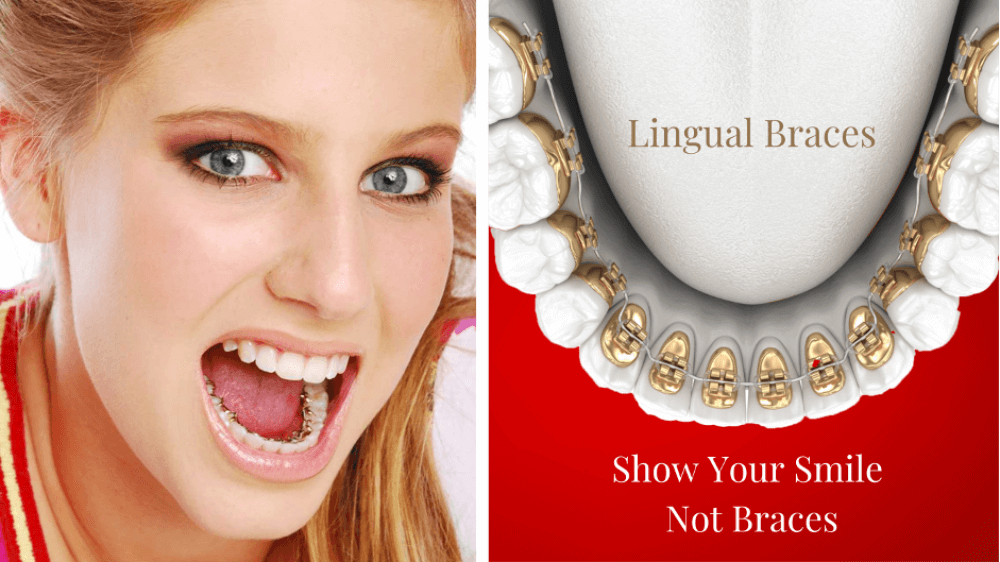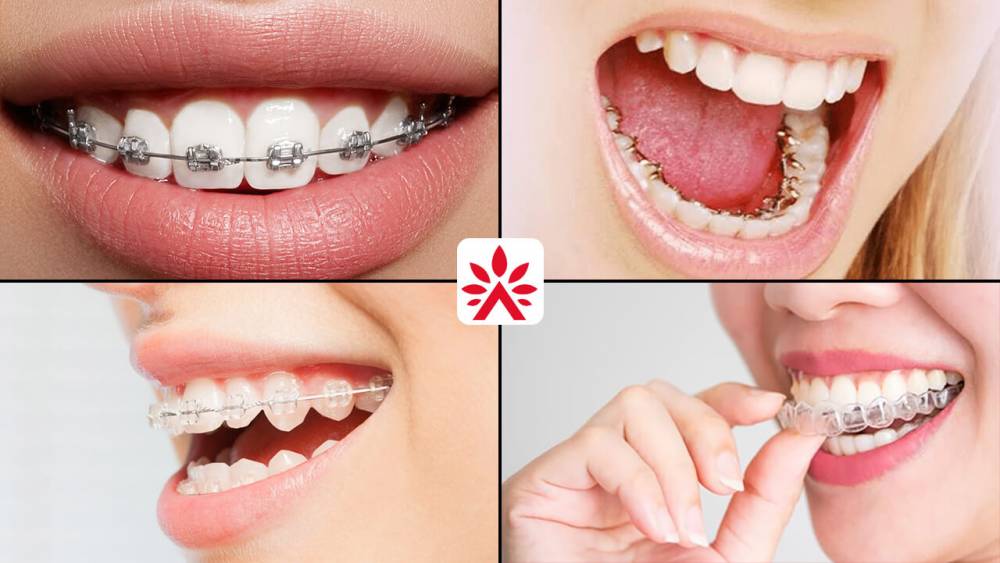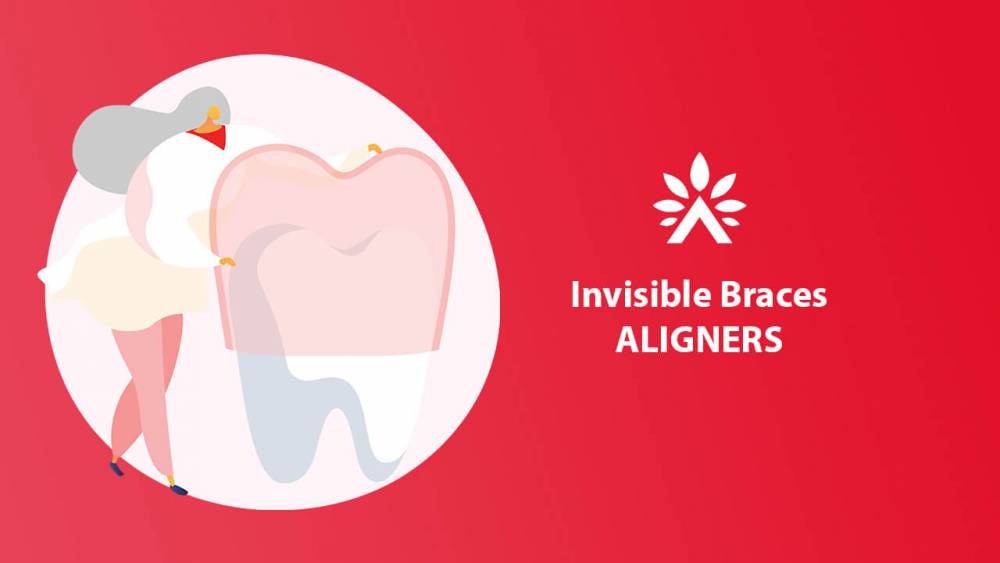
Lingual braces
A smile is considered a sign of beauty. It’s a fact that people are more attracted towards smiling faces. Beautiful and aligned teeth are considered a blessing. Some people have misaligned teeth for many reasons like inheritance, accident or any bad functional habits like thumb sucking; prolong use of pacifiers, especially in childhood. Good and aligned teeth can allow you to eat, swallow and breathe easily. It can boost you up and your presence will be much more considerable. It can help you to develop more and more opportunities in your life. People are attracted to each other by their appearances first.
 There are many treatments and advanced technologies that have been introduced for misaligned teeth which are safe and easy. Many treatments are available now days for correction of misaligned teeth. These are gold braces, metal braces, aligners, ceramic braces and lingual braces. Your orthodontist can guide you best about the pros and cons of different treatment options and which one will give you the best results. Read more
There are many treatments and advanced technologies that have been introduced for misaligned teeth which are safe and easy. Many treatments are available now days for correction of misaligned teeth. These are gold braces, metal braces, aligners, ceramic braces and lingual braces. Your orthodontist can guide you best about the pros and cons of different treatment options and which one will give you the best results. Read more
Let’s talk about lingual braces here. These braces are used by many people who want their teeth aligned but they don’t want any robotic look.
What are lingual braces, inBrace or Incognito braces?
Lingual braces, inBrace or Incognito Braces have the same metal wires and brackets as traditional metal or gold braces but instead of the outside of the teeth, wires and Brackets are attached to the inner side of the teeth, so they are nearly invisible as they are on the back side of your teeth. A complete invisible way to straight your misaligned teeth.



The main difference between Incognito braces and lingual braces is that, incognito braces are customised lingual braces made in dental laboratory from a mould taken of your teeth and bonded with teeth with special customised tray while lingual braces are bonded directly in dental clinic without any laboratory fabrication.
When were Lingual braces first applied and by whom?
Craven Kurz and Jim Mulick were the first to develop prototypes for lingual braces in 1975. The first lingual braces were produced in 1979 after Craven Kurz applied for a patent in 1976.
Are you a good candidate for lingual braces?
Do lingual braces work for everyone? Am I a good candidate for Lingual Braces? No everybody is a good candidate for lingual braces.
On the initial consultation day, your orthodontist will examine your teeth, gums, oral cavity and take important x-rays where required and discuss whether lingual braces are right for you or which other teeth straightening treatment options for correction of your specific bite and alignment problems. Mostly bite problems can be fixed with lingual braces just as with conventional braces. Do lingual braces fix overbites? Deep overbites might not be best treated using lingual braces. Deep overbite tends to exert a considerable amount of pressure, which can end up in brackets deboning and delay of your orthodontic treatment.
How much do lingual braces cost?
How much are lingual braces? The cost of braces depends on various factors and differs according to
-
Treatment duration
-
Location
-
Insurance coverage (if any)
-
Type of appliance
Do lingual braces cost more?
Yes! Costs may be higher with lingual braces, because the process of applying them is delicate and a little more time-consuming, in addition to special training required for it. In case there is some customization done to the braces according to an individual's treatment needs, it can add up the cost. Aligners is offering same price as of lingual braces. Read more
How long do lingual braces take to work?
You will have to visit your orthodontist every 4-6 weeks like in other treatment with metal braces, gold braces and ceramic braces. In every visit they adjust or change your braces wires as required and see if everything is moving as planned. The duration of orthodontic treatment varies from case to case. In most cases it takes 12-18 months, but in simple case where there is mild teeth straightening required, it could take as little as 6months.
Do lingual braces take longer?
As lingual braces are bonded to the back side of the teeth and they take longer as they need many clinical sessions, orthodontists’ consultations and technique sensitive treatment. Possible Drawbacks of lingual braces Here are a few things you should consider if you are considering going for lingual braces but they don't happen in every case and can vary from person to person.
Speech difficulties-As lingual braces are placed on the inner surface of your teeth, it might feel a little strange at first and there could be some speech difficulty (a lisp or a whistling sound)but you get used to them in a couple of weeks or so.
Sore tongue-As your tongue will be repeatedly hitting against your braces a lot in the beginning, it might cause some discomfort. There are certain ways you can soothe the pain, so don't worry about that much. Warm salt water rinses and over-the-counter medication can provide temporary relief.
Discomfort- Are lingual braces more painful? As far as the lingual braces are concerned some patients find it a painful orthodontic treatment. They can be uncomfortable while talking or eating, because every time the tongue touches these metallic hard structures, it might injure easily. As lingual braces are very hard structures, food can easily stuck in them and they may damage your gums and create many other dental diseases.
Dietary limitations- For people wearing braces, hard, crunchy and sticky foods are a big No as they can cause brackets to deboned cause delay orthodontic treatment.
Proper maintenance of Oral Hygiene-As the braces are attached on the back of your teeth, getting rid of all the food and plaque stuck between your teeth and your braces can be tough. Electric toothbrush after every meal and regular flossing should be a part of your daily cleaning routine for efficient cleaning.

What foods to eat and not to eat with Lingual Braces?
How to eat with lingual braces? Avoid hard candies and dry fruits. Soft foods like Pasta, rice, bread, cheese, yogurt, soft fruits cut into small pieces; steamed or roasted vegetables are good food choices that can be consumed while you have lingual braces.
Other treatment options of Lingual braces Ceramic braces are the other options for individuals who are hesitant to get conventional metal braces without feeling self-conscious about their braces because of its look. Now day’s orthodontists have increasingly faced the problem of patients demanding treatment with more aesthetic appliances. In fact, conventional metallic, lingual or ceramic brackets, is often not accepted from adults and subjects with high aesthetic demands. In order to provide solutions to these patients’ requests, Aligners were introduced.
Let’s move into 21st century people
Aligners is an Alternative to lingual braces

Posted On 04 Apr, 2022


